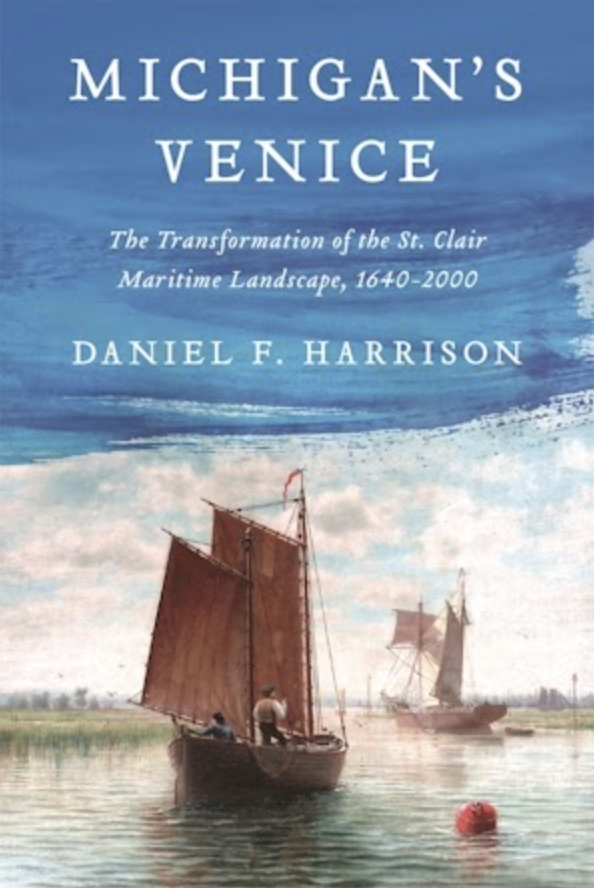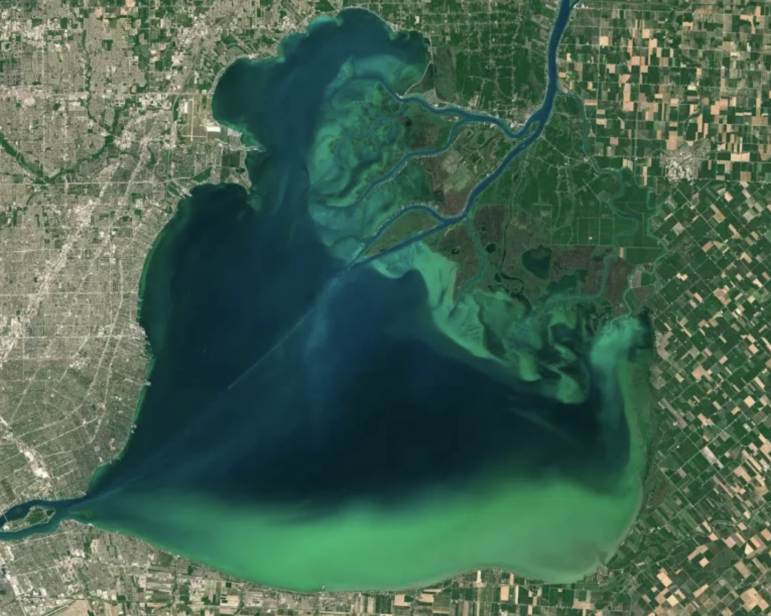
Wayne State University Press
Michigan’s Venice CoverBy ANNA BARNES
Capital News Service
LANSING – Sitting at 26 miles long and 24 miles wide, with nearly one-third of the sport fishing catch annually in the Great Lakes region, Lake St. Clair should be a household name.
Author Daniel Harrison would tell you it’s his hidden jewel.
Harrison anticipates publication of his first book, Michigan’s Venice, in April.
He became a consultant maritime archeologist after retiring as a reference librarian at Henry Ford College in 2019. With a doctorate in anthropology from Wayne State University and a desire to tell the tale of an underappreciated great lake, Harrison, 74, transformed his doctoral dissertation into a book to reach a larger audience.
He spent time in his youth diving in Lake St. Clair and he’s lived near the water most of his life. He chose his dissertation topic after realizing there wasn’t much research from an anthropological perspective on the body of water.
The changing maritime cultural landscape of Lake St. Clair is responsible for some of Michigan’s top economic development, including boat manufacturing, Harrison said. Chris-Craft Boat’s original headquarters was located in Algonac along the St. Clair River.
“Lake St. Clair is kind of the birthplace of American recreational boating,” Harrison said. “Chris-Craft is like the Henry Ford of recreational boating. The equivalence of Ford, Chevrolet, Cadillac and so on.”
Michigan’s Venice looks at the changing maritime cultural landscape with a mix of literature, history, culture, anthropology and cartography.
An archeologist may question the use of literature while a writer may question the amount of data, but the book covers all the bases, Harrison said.
“If you’re patient and keep going, it’s like Michigan’s weather,” he said. “It will change. You will find something you like.”
A maritime cultural landscape is a place where the human use of an area has something to do with movement by water, he said. Culture is added to the phrase because the physical landscape allows for cultural association, like connecting the boats at a marina with Lake St. Clair.
Lake St. Clair is a center of cultural significance.
Walpole Island First Nation is an Indigenous reserve that is the original territory called Bkejwanong, Harrison said. The land was not given to them by the government, but rather the Indigenous people never gave it up.
Bkejwanong translates to “where the waters divide.”
The people who live there maintain many of their traditional lifestyles, he said. “They have kind of restored in many ways their culture, their language– and it is a cultural center.”
Unlike many groups of Native Americans, the residents living on Walpole Island were not displaced to the West and living on land that is not affiliated with their homeland, Harrison said.
Lake St. Clair and its extensions also are known for game fishing.
However, the area was almost ruined by industrial pollution.
The Clean Water Act was a catalyst for game fishing to explode in the area as the waters became more habitable for several species, including walleye, sturgeon and bass.
The fishing in Lake St. Clair has seen worse times, said Jennifer Tewkesbury, the state’s coordinator for the federally-designated Area of Concern covering the Clinton River.
“Before we had water quality standards, we were seeing some issues within Lake St. Clair itself with some of the fish populations declining and we were seeing some heavier metal contaminations in the fish tissue,” she said.
A changing mindset about the lake itself and new water standards contributed to its restoration, Tewkesbury said.
Lake St. Clair “is seen as a resource not just as something we can flush all of our waste and our discharges into,” she said. “We see it more as an asset and a part of our blue economy.”
From a local perspective the lake is significant enough to be referred to as the sixth Great Lake, she said. It is home to one of the only public beaches in Macomb County.
The lake’s shallow edges and reed beds contribute to a healthy habitat for fish, Harrison said. “The fishing is phenomenal, and it’s getting better all the time as we restore habitat and we clean up our water.”
Industrial pollution is not the only consequence of development in the area.
Larger passages were dredged and optimized for large freighters after the invention of steam shovels, Harrison said. This led to rising water levels.
A church, St. Felicity, and a village, Belvidere, were abandoned and eventually went beneath the water, examples of the unintended consequences to the environment that Harrison addresses.
Harrison uses Michigan’s Venice to explain what the lake has become by combining several perspectives and disciplines.
Lake St. Clair got the nickname “Michigan’s Venice,” in the late 19th century as day cruising, dining, dancing and more recreational centers popped up along the channels, he said. People with more money and free time spent their leisure traveling through Lake St. Clair’s canals.
After 10 years working and re-working his doctoral dissertation into Michigan’s Venice, Harrison will see the book published by Wayne State University Press ($39.99).
Anna Barnes reports for Great Lakes Echo.

Kelsey Giffin
Author Daniel Harrison is anticipating publication of his book, Michigan’s Venice.
NASA Earth Observatory, Joshua Stevens
Algal blooms highlight the natural beauty of Lake St. Clair and its canals